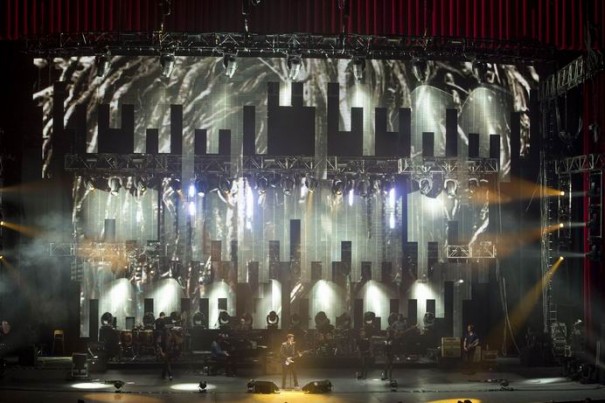Canal+ estrenará en septiembre el concierto en 3D de Alejandro Sanz
Canal+, con los medios técnicos de Apuntolapospo y Videoreport (Grupo Vértice 360), recogió en 3D las dos actuaciones que Alejandro Sanz ofreció en Madrid dentro de su Gira Paraíso. Ésta es la primera vez en España que se produce un concierto en directo en 3D.
En septiembre, Canal+ 3D estrenará Alejandro Sanz 3D, un espectáculo musical en tres dimensiones fruto de la producción estereoscópica realizada por Canal+ con medios técnicos de Apuntolapospo y Videoreport (Grupo Vértice 360) en los dos directos que el cantante ofreció el pasado mes de mayo en el Palacio de los Deportes de Madrid dentro de su actual Gira Paraíso. Este ambicioso trabajo supone la primera vez en España que se produce un concierto en directo en 3D.
Para producir Alejandro Sanz 3D, Canal+ ha realizado un importante despliegue técnico con una unidad móvil 3D con control de estereoscopía que opera sobre 20 cámaras implantadas en diversos tipos de rigs motorizados. Estas cámaras van montadas sobre dos cabezas calientes, tres grúas sobre cincuenta metros de vía de travelling, dos steadycam… Todo ello se complementa con el registro de sonido en Dolby 5.1 envolvente para proporcionar al espectador una experiencia única.
Producción
La grabación en 3D exige la simulación de la visión humana para dar al espectador la sensación de realismo. Esta apariencia de realidad se consigue captando dos imágenes muy similares con dos cámaras que van montadas sobre un bastidor especial. Para obtener una separación similar y constante entre las dos ópticas de las cámaras, se requieren sistemas especiales que permitan reproducir con exactitud y en paralelo todos los ajustes ópticos de ambas cámaras (movimientos panorámicos y verticales, zoom, foco, colorimetría, luminosidad, contraste, etc.).
Las diferencias entre las dos imágenes, al igual que en el cerebro humano, son las que finalmente crearán la sensación de tridimensionalidad. Cuanto más se acentúen estas diferencias, mayor es el efecto estereoscópico que se obtiene; por contra, cuanto más se haga trabajar al cerebro para integrar ambas imágenes aumenta la fatiga visual.
La coherencia de ambas imágenes facilita la inmersividad del espectador en la experiencia 3D.
Ya sea en la etapa de postproducción o en directo en una retransmisión, existen herramientas específicas para tratar las señales estereoscópicas, bien para reducir desajustes entre las señales izquierda y derecha, o para acentuar más estas diferencias y crear un efecto tridimensional más acusado.
Para visualizar estas dos señales como una única señal 3D estereoscópica se requiere algún tipo de codificación y una pantalla especial preparada para 3D.
Las señales en directo son transportadas desde la unidad móvil hasta el centro de emisión de Canal+, y desde ahí hasta los hogares, multiplexadas en una sola señal HD en formato “Side By Side”. Esta señal, mostrada en un televisor o monitor convencional, aparece como una pantalla dividida verticalmente en dos mitades, en cada una de las cuales se muestra la señal de un ojo con la relación de aspecto 16:9 modificada para adecuarlas al tamaño total de la pantalla.
Los televisores preparados para 3D se encargan de descomponer esta multiplexación y mostrar a pantalla completa las dos señales superpuestas.
Dependiendo de la tecnología que emplea el televisor, la señal de la pantalla se proyecta hacia el espectador mediante dos haces de luz con diferente polarización, o de forma secuencial alternando la imagen del ojo derecho con la del izquierdo. Para el primer caso se requieren gafas cuyos cristales filtren respectivamente el haz con la polarización correcta (gafas pasivas, que no requieren alimentación eléctrica). En el caso de presentación secuencial de las imágenes izquierda y derecha se requieren gafas cuyos cristales se oscurezcan alternativamente por obturación de forma sincronizada con la imagen que se muestra (gafas activas). Estos sistemas suponen una gran mejora respecto al sistema de proyección en 3D anaglífico que se comenzó a usar a mediados del siglo XX, y que se basaba en la separación de colores para cada imagen.
Solo aquellos espectadores que televisor 3D y con el terminal de Digital+ iPlus podrán seguir esta emisión.
Did you like this article?
Subscribe to our NEWSLETTER and you won't miss anything.




